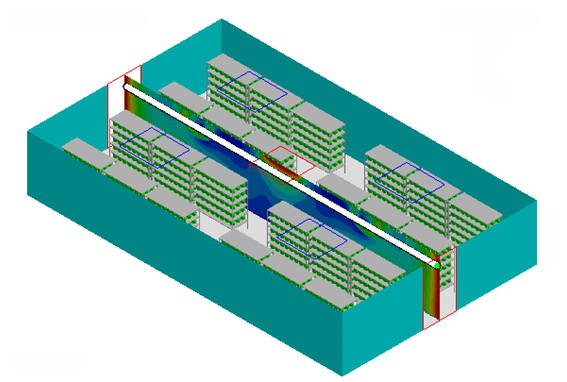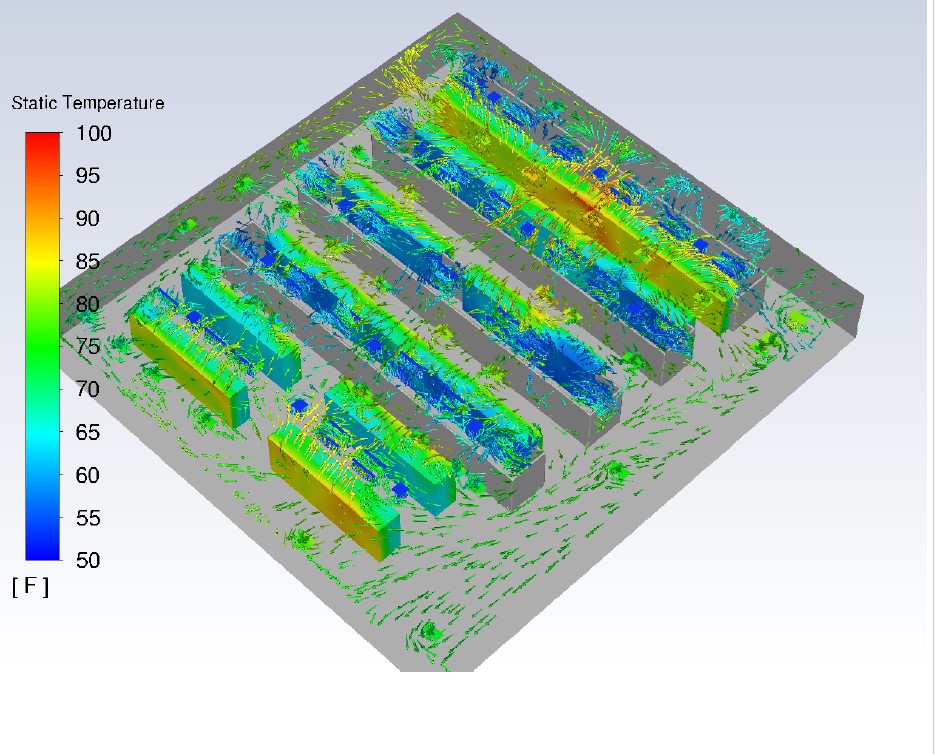
Swanson Rink uses computational fluid dynamics (CFD) analysis to simulate the effects of plant transpiration in a controlled environment for improved facility design and performance. Understanding plant-air interactions is key to optimizing the distributed climate within indoor plant growth facilities.





